By Mike Smith
Don’t pass to your line. One of my coaching mentors used to use this rule during training and scrimmages to help a very young and inexperienced high school team develop vision, composure and move the ball. Initially, we would revert to “traditional” soccer during games( which wasn’t the greatest), but mid way through the season we found this group actually played better when under this simple rule. Of course there are exceptions to every rule but in my experience, when one focuses on exceptions, they can quickly out weigh the rule.
During matches, we offered two instructions to help implement the Don’t Pass to Your Line rule – 1. If you don’t have a pass keep the ball, and 2. If you have to get rid of it, just kick it out of bounds. After all, very few teams do a lot of damage from throw ins, but MOST teams do a lot of damage from turnovers in the field of play. The concept is straight forward, Defenders pass to any Mid or Fwd or even the Keeper, Mids pass to any Fwd or Defender ( or Keeper ) and Fwds pass to Mids or Defenders – the only exception comes in the opponents box when combining to score. Here are a few examples:
Against a 4-4-2, an outside back should have some time with the ball and a direct line to the forward on their side.
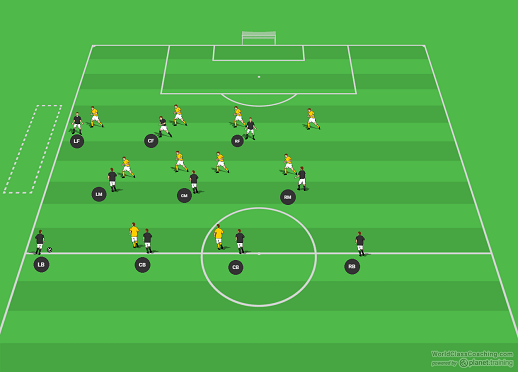
As shown below, once receiving the ball, this forward now has multiple options to combine back with the defender or the supporting mids.
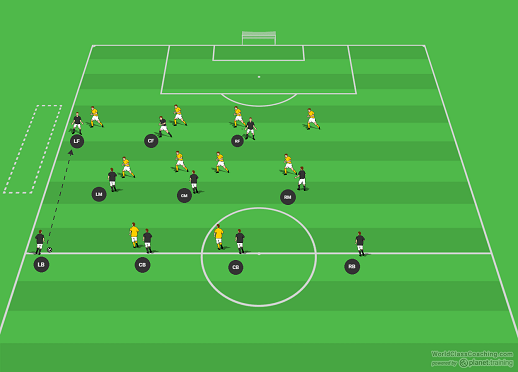
Or ( below again ), there will be a perfect series of diagonals set up to switch the field by alternating defenders and mids. In the diagram, the defender has received the ball back from the forward , which has drawn one of the defending teams center backs out and opened up space on the far side.
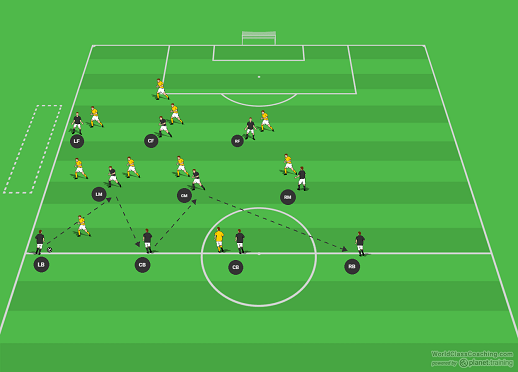
Finally ( again below ), if the defending team shifts all the way over on the initial pass up and drop back on the line, there will be space for the defenders, mids and forwards to combine right up the center and exploit both the central areas and wide areas as well.
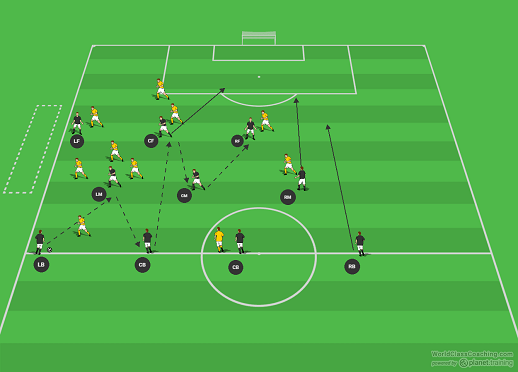
I have found this a great training tool for young teams and a very good “ adjustment system” to use with my more experienced teams. I really prefer to play a direct style from a 4-3-3 and have found the Don’t Pass to Your Line rule very effective for both starting a game when I plan to play more direct in the second half or for settling the game down with a lead / giving the opponent a different look after halftime. If you think this is something which can help your group, try this exercise at practice:
Set Up
Create a 30 x 30 grid as shown. 2 attacking players occupy each of the three 10 x 30 sections. Two defending players are free to roam the entire space. This is basically keep away but the attacking players cannot pass to the other attacking player in their section.
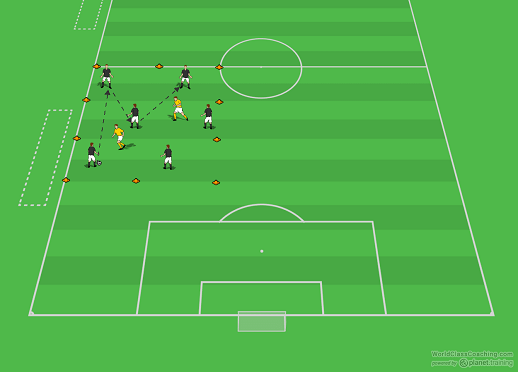
The coach can set up a number of passes for the attacking team to complete before switching out with the two defenders. The coach can also set the conditions for the defenders should they win the ball ( kick it out, keep it, switch players, etc..) but with 6 v 2 the defenders should not really touch the ball at all.
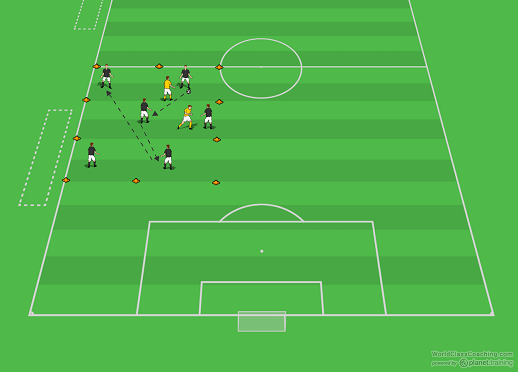
To progress, expand the area another 10 – 15 yards, add two more defenders and one more attacker who is free to roam the entire area. As the diagram below shows, even if all of the defenders mark the 4 attackers closest to the ball, one outlet will provide an easy switch ( this is a very realistic game scenario as well).
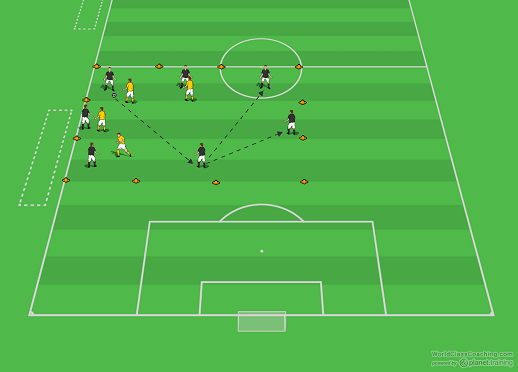
Coaching Points
The coach should focus the players on looking beyond their own section. With the exception of a switch or perhaps a quick service, most of the time, the square player isn’t really looking at anything different than the player on the ball beside them and will most likely play the ball to a different line anyway. The idea of constantly switching the ball between lines creates vision, movement, excellent passing and touch and will off balance any opponent when done correctly.
By Mike Smith
Currently the Head Coach for University Heights Academy Boys Soccer in Hopkinsville, KY , Mike is in his 14th year as a high school head coach with 23 years coaching experience overall and 34 year as a student and fan of the game. He holds a USSF D License.


